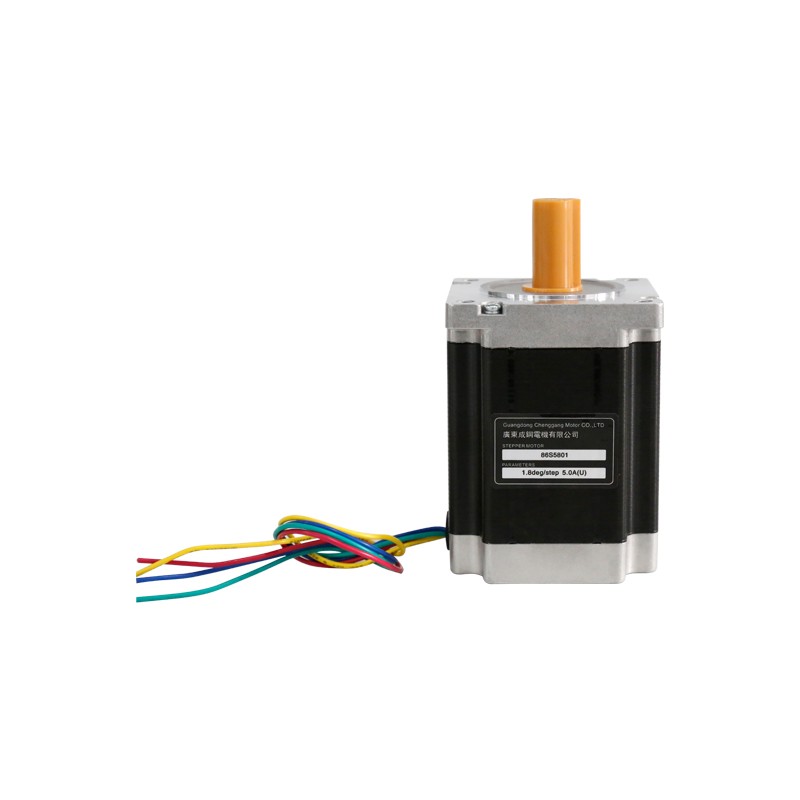Source:Industry News Release time:2022-07-14 Clicks:0 Popular:Reduction motor manufacturer

Stepper motors can only be controlled by digital signals. When pulses are provided to the driver, the control system sends too many pulses in a short period of time, that is, the pulse frequency is too high, which will cause the stepper motor to stall. To solve this problem, acceleration and deceleration must be used. In other words, when the stepper motor starts, the pulse frequency needs to be gradually increased, and when decelerating, the pulse frequency needs to be gradually reduced. This is what we often call the "acceleration and deceleration" method.
Therefore, when the stepper motor starts at high speed, it is necessary to increase the pulse frequency, and there must be a deceleration process when stopping to ensure the precise positioning control of the stepper motor. The principle of acceleration and deceleration is the same.
stepper motor
Taking acceleration as an example: the acceleration process is an acceleration curve composed of a base frequency (lower than the highest frequency at which the stepper motor starts directly) and a jump frequency (a gradually increasing frequency) (the deceleration process is opposite). Jump frequency refers to the frequency at which a stepper motor gradually increases from its base frequency.
Exponential curve, in software programming, first calculate the time constant and store it in the computer memory, and click it during work. Usually, the acceleration and deceleration time of a stepper motor is more than 300ms. If the acceleration and deceleration time is too short, most stepper motors will have difficulty achieving high-speed rotation of the stepper motor.
Measurement of speed changes
The use of stepper motors is roughly divided into position control and speed control. The speed range of speed control can be variable speed control or constant speed from low speed to high speed, but there is the problem of speed change.
This is a measurement of the speed change rate, measured with equivalent inertia or friction torque based on the actual load inertia, to approximate the actual usage value. Especially when the inertia is large, the speed change rate (also called stall, jitter, swing, etc.) is also large. Therefore, we must pay attention to the speed operating range of the stepper motor. The faster the speed, the smaller the speed change rate.
This measurement method is roughly divided into a method using an encoder and a laser measurement method. When using an encoder, it should be noted that the axis of the encoder and the coupling of the stepper motor should be concentric, and the influence of the encoder's inertia should also be considered. To calculate the speed change rate, first count the number of pulses in the encoder per unit time one by one, and then calculate the speed change rate. Using the laser measurement method, a disc is installed on the stepper motor, the disc reflects the laser beam, reflects the light back, and uses the commercially available Doppler effect to calculate the speed change. If there are no special requirements to use an encoder for measurement, it is best to use a laser measuring instrument.
Recommended reading
There are several types of structures of reduction motors
Performance characteristics and application scope of right angle planetary reducer
Related Information
CGX042
2021-01-13Planetary reducer
2021-04-15Fixed speed motor
2020-12-21CGX060
2021-01-13CGXZ115
2021-01-13CGXZK060
2021-01-13CGXK085
2021-01-13Stepper motor
2020-12-21Planetary reducer
2021-04-15Planetary reducer
2021-04-15Stepper motor
2021-04-14Stepper motor
2020-12-21CGZF-042L1-5-P2
2020-12-21CGXZ085
2021-01-13Fixed speed motor
2020-12-21Stepper motor
2021-04-14CGXK142
2021-01-13Planetary reducer
2020-12-21